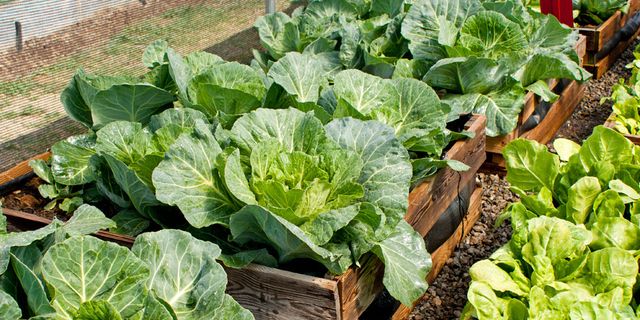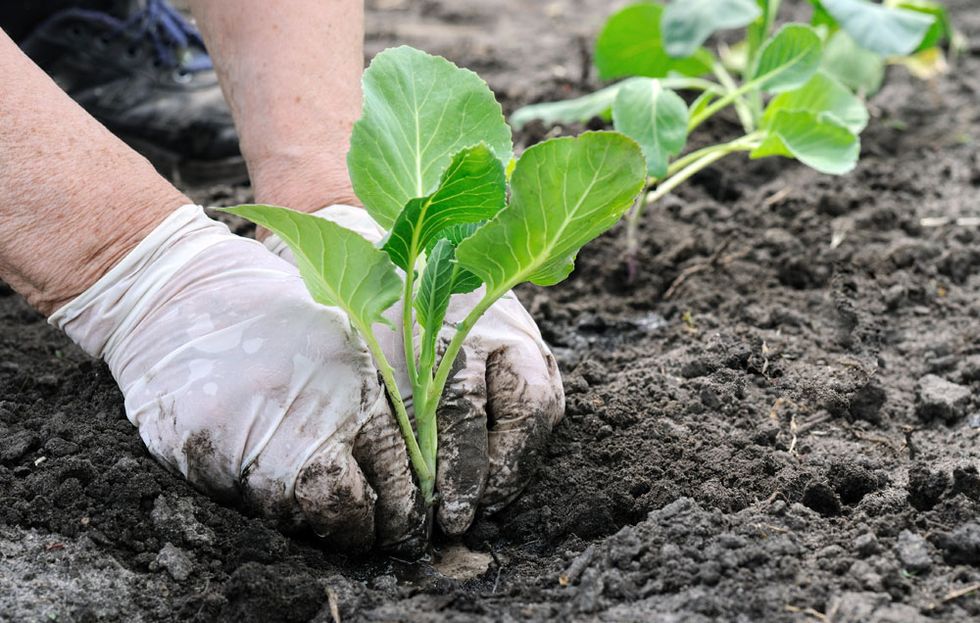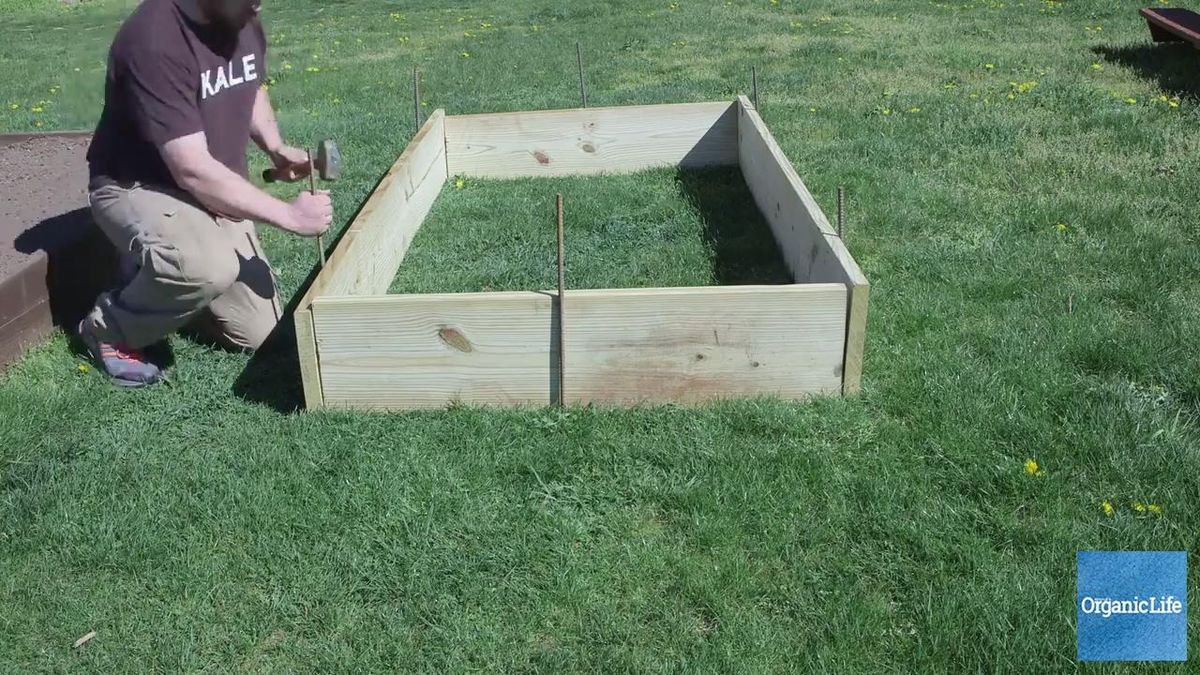Cabbage thrives in cool weather. In most areas, you can plant an early crop for fresh eating and a late crop—usually the more problem free and tasty of the two—primarily for winter storage.
Choose early varieties such as 'Primax' for summer harvest; midseason and late-season cultivars for storage.
Mini cabbages such as 'Gonzales', harvested when only 6 inches in diameter, are perfect for small gardens.
Loose-leaf versions include Chinese cabbages, like bok choy, and ornamental cabbages.
(Whether you're starting your first garden or switching to organic, Rodale’s Basic Organic Gardening has all the answers and advice you need—get your copy today!)
Planting Cabbage
You can buy transplants from a local grower, but cabbage is easy to grow from seed. Plan to set out early types 4 weeks before the last expected frost date. Sow seeds indoors, 1/4 inch deep and 2 inches apart, around mid-January or February in the South and in March in the North. Place in a sunny spot or under lights with temperatures between 60° and 70°F, and keep the soil uniformly moist. When daytime temperatures reach 50°F and seedlings have three leaves, plant them outdoors.
Plant seedlings in the garden slightly deeper than they grew in flats. Space 6 to 12 inches apart in rows 1 to 2 feet apart. Wide spacings produce bigger heads, but young, small cabbages are tastier. To get both, plant 6 inches apart and harvest every other one before maturity. Stagger plantings at 2-week intervals for a longer harvest.
Start your late crop in midsummer, sowing seeds in flats or directly in the garden. Space these seedlings farther apart than the spring crop, and place them so a tall crop, such as corn or pole beans, provide some afternoon shade.
Related: 6 Things You Need To Know About Planting Cabbage This Fall
Cabbage Growing Guidelines
Soil texture is not critical, but early cabbages do best in a sandy loam, while later types prefer a heavier, moisture-retaining soil. Side-dress seedlings with rich compost 3 weeks after planting. Hand pull weeds to avoid damaging cabbage's shallow roots; use a mulch to keep the soil moist. Uneven watering can cause a sudden growth spurt that will make the developing head split. If you see a cabbage head starting to crack, twist the plant a half turn and pull up to slightly dislodge the roots and thus slow the plant's growth. Or use a spade to cut the roots in one or two places 6 inches below the stem. This also helps to prevent cabbage from bolting (producing a flower stalk).
Avoid wetting the foliage during cool weather or periods of high humidity, because constantly wet leaves are prone to disease. Cut back on water as cabbage matures. If leaves start to yellow, provide a mid-season nitrogen boost with compost tea. This type of feeding can also encourage a slow-growing crop to mature before hot weather or a winter freeze sets in.
Related: How To Get Kids Of All Ages Excited About Growing And Eating Veggies
Problems When Growing Cabbage
Major cabbage pests include cabbage maggots, imported cabbageworms, cabbage loopers, and cutworms. The harlequin bug, a small shiny black insect with red markings, causes black spots and wilting leaves; control by hand picking or applying insecticidal soap. Slugs may chew ragged holes in leaves.
Black leg, a fungal disease, forms dark spots on leaves and stems. Black rot symptoms include black and foul-smelling veins. Club root prevents water and nutrient absorption. Fusarium wilt, also known as yellows, produces yellow leaves and stunted heads. Remove and destroy plants affected by these diseases. If club root has been a problem in your garden, test soil pH before planting and add ground limestone if needed to raise the pH to at least 6.8
Good growing conditions, crop rotation, and the use of disease-resistant cultivars are the best defenses against cabbage-family crop problems. Also, thoroughly clean up the garden at the end of the season, removing all remaining leaves and roots.
Related: How To Time Your Planting To Avoid Garden Pests
Harvesting Cabbage
Use a sharp knife to cut heads when they are firm. Leave stalks and roots in place to produce tasty little cabbages; eat them like Brussels sprouts or let them develop into a second crop of small heads. Fresh cabbage has the best taste, but late-season cultivars keep well in a moist, cool place (32° to 40°F) for 5 to 6 months. Use split heads for making sauerkraut.
Related: 7 Genius Ways To Use The Rest Of The Cabbage In Your Fridge














